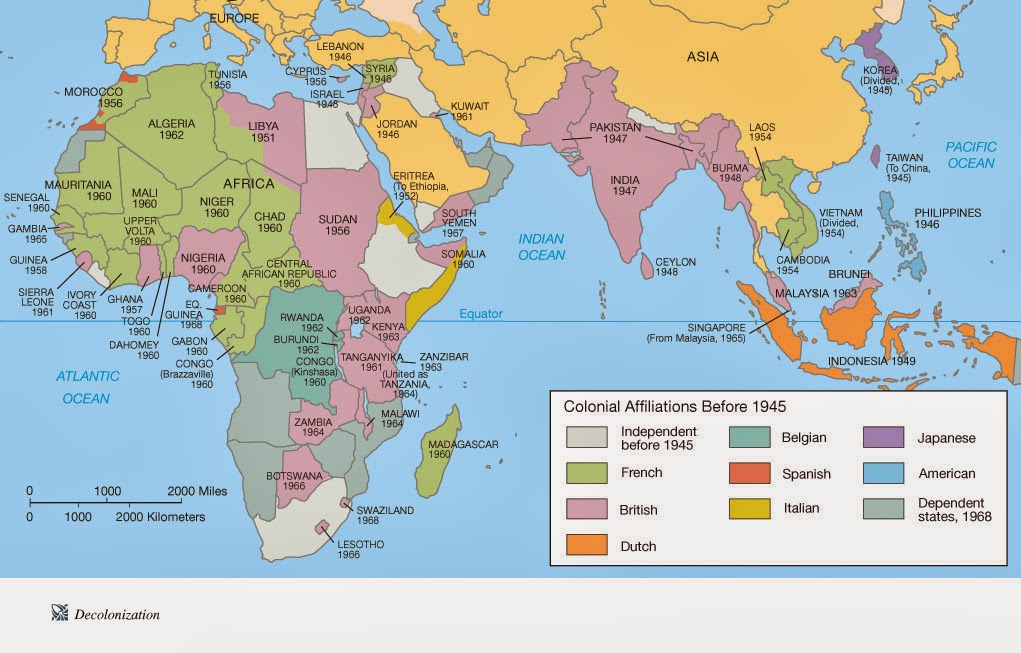By
the 17th century, European trade with Asia was so important that the
British, Dutch and French set up companies to control their interests. These
companies laid the foundations for colonies. During the long reign of Queen
Victoria, Britain became the world’s most powerful nation, ruling a huge
empire.
The Dutch concentrated on the islands of Indonesia. The
British and French fought over India until 1763, when the British East India
Company took control of much of the country.
In the 1830s, the Dutch decided they wanted to control
more than just trade with Indonesia, and so they started to oversee agriculture
on the islands. They set up plantations to grow crops including coffee and
indigo (a plant from which a blue dye is made). Enormous profits were made by
Indonesian princes and Dutch colonists at the expense of the ordinary people,
who no longer had the time or land to grow the crops they needed for
themselves.
As well as controlling India, Britain also began to
build up colonies in Southeast Asia. One of the earliest, in 1819, was
Singapore on the tip of the Malay peninsula. By 1867, Malacca and Penang had
also become British colonies, and, in 1896, the remaining Malay states formed a
federation under British advisers. Ruling through the local sultans, the
British controlled Malaya, setting up rubber plantations and tin mines. From
1824, Britain also tried to take control of Burma. The Burmese resisted, but
were finally defeated in 1885.
During
the Crimean War (1853-56), Turkey, France and Britain fought against Russia.
Thousands of British soldiers died from neglect and disease. Florence
Nightingale and her team of nurses cleaned up the military hospitals and set up
Britain’s first training school for nurses.
France, meanwhile, began to take control of Indochina
(now Cambodia and Vietnam), and later added Laos.
Much of Britain’s wealth came from her colonies.
Colonies and trading posts had been established in the 17th and 18th
centuries in places as far apart as Canada, India, Australia and the Caribbean.
More were added by the Treaty of Vienna at the end of the Napoleonic Wars.
During Victoria’s reign, still more colonies were adding, including New
Zealand, many islands in the Pacific and Atlantic oceans, parts of the Far East
and large areas of Africa. At its greatest extent, in the late 19th
century, the empire contained a quarter of the world’s land and a quarter of
its people.
The colonies provided raw materials for British
factories and a market for their goods. At first, some were run by trading
companies, such as the East India Company in India. However, gradually they all
came under direct rule from Britain. In many colonies, plantations were set up
to produce tea, sugar, coffee, spices, rubber and cotton.
The British empire’s influence was worldwide, with other countries adopting British laws, technology and culture. During the 20th century, however, Britain’s influence declined and the country was no longer supreme as an industrial power. After World War II, the empire began to break up as countries sought independence.



No comments:
Post a Comment